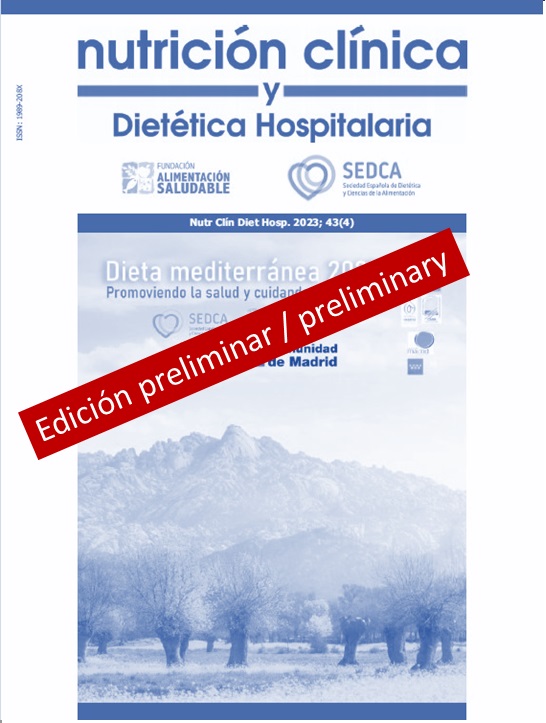Teaching best practices for tricipital fold assessment in physical education students
DOI:
https://doi.org/10.12873/Keywords:
Composición corporal, Pliegue tricipital, Universitarios, procesos de enseñanzaAbstract
Introduction: The skinfold method is widely used in health and exercise sciences, so it requires practical experience for its measurement.
Objective: To develop a teaching program to measure the tricipital skinfold assessment process in physical education students.
Methods: A pre-experimental study was designed, a group of university students underwent a teaching program to evaluate the tricipital skinfold for 2 sessions of 120 minutes each during 2 weeks. The perception scale was applied to knowledge of body composition (BC) assessment, anthropometric assessment and ultrasound of the tricipital fold. Descriptive statistics were used, comparisons were by means of t-test for similar samples. To observe the concordance between both methods, the Bland-Altman plot was used. The significance level adopted was 0.05.
Results: there were significant differences (p<0.05) in the scale used, after the application of the teaching of the tricipital fold measurement process (p<0.05). The average values by anthropometry (tricipital fold) was 17.01±6.01mm and by the criterion method (Bodymetrix) was 16.46±5.60 mm. No significant differences were observed between the two methods. Adequate agreement was observed between both methods and the limits of agreement were -1.04 to 2.14mm.
Conclusion: The practical class of short duration can be effective to develop competences in the evaluation of the tricipital fold and to improve the self-perception of the evaluative processes in physical education students.
References
1. Sallis, J.F., & McKenzie, T.L. Physical education's role in public health. Res Q Exerc Sport. 1991 Jun;62(2):124-37. https://doi.org/10.1080/02701367.1991.10608701. PMID: 1925034.
2. Tur, J.A., & Bibiloni, M.D.M. Anthropometry, Body Composition and Resting Energy Expenditure in Human. Nutrients. 2019 Aug 14;11(8):1891. https://doi.org/10.3390/nu11081891.
3. Ferguson, B. ACSM’s guidelines for exercise testing and prescription 9th Ed. 2014. The Journal of the Canadian Chiropractic Association. 2014;58(3):328.
4. Heyward, V.H. Applied body composition assessment. Champaign Human Kineties. 2002;2-20.
5. Heymsfield, S.B., Wang, Z., Baumgartner, R.N., & Ross, R. Human body composition: advances in models and methods. Annu Rev Nutr. 1997;17:527-58. https://doi.org/10.1146/annurev.nutr.17.1.527.
6. Holmstrup, M.E., Verba, S.D., & Lynn, J.S. Developing best practices teaching procedures for skinfold assessment: observational examination using the Think Aloud method. Adv Physiol Educ. 2015 Dec;39(4):283-7. http://doi.org/10.1152/advan.00044.2015.
7. Kasper, A.M., Langan-Evans, C., Hudson, J.F., Brownlee, T.E., Harper, L.D., Naughton, R.J., Morton, J.P., & Close, G.L. Come Back Skinfolds, All Is Forgiven: A Narrative Review of the Efficacy of Common Body Composition Methods in Applied Sports Practice. Nutrients. 2021 Mar 25;13(4):1075. https://doi.org/10.3390/nu13041075.
8. Ross WD, Marfell-Jones MJ. Kinanthropometry. Physiological testing of elite athlete. London: Human Kinetics; MacDougall, JD, Wenger, HA, Geeny, HJ, Eds. 1991;223-308.
9. Oukheda, M., Bouaouda, K., Mohtadi, K., Lebrazi, H., Derouiche, A., Kettani, A., Saile, R., & Taki, H. Association between nutritional status, body composition, and fitness level of adolescents in physical education in Casablanca, Morocco. Front Nutr. 2023 Nov 7;10:1268369. https://doi.org/10.3389/fnut.2023.1268369.
10. Utkualp, N., & Ercan, I. Anthropometric Measurements Usage in Medical Sciences. Biomed Res Int. 2015;2015:404261. https://doi.org/10.1155/2015/404261.
11. Ulijaszek, S.J., & Mascie-Taylor, C.G. Anthropometry: the individual and the population. In Anthropometry: the individual and the population. 1994;213-213.
12. Zuchinali, P., Souza, G.C., Alves, F.D., d'Almeida, K.S., Goldraich, L.A., Clausell, N.O., & Rohde, L.E. Triceps skinfold as a prognostic predictor in outpatient heart failure. Arq Bras Cardiol. 2013 Nov;101(5):434-41. https://doi.org/10.5935/abc.20130185.
Downloads
Published
Issue
Section
Categories
License
Copyright (c) 2025 Nutrición Clínica y Dietética Hospitalaria

This work is licensed under a Creative Commons Attribution-NonCommercial-NoDerivatives 4.0 International License.
Los lectores pueden utilizar los textos publicados de acuerdo con la definición BOAI (Budapest Open Access Initiative)



